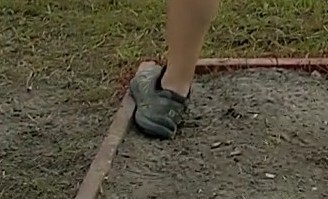Permanently Deleted
It's easy to pick up because it's an actually sane and good system of measurement, so one day we just find ourselves in a random high school science class that uses it and it's not a problem.
I guess so, but it seems like extra work to teach kids a bunch of units... Then teach them a bunch of new ones later. Why not just switch the whole country to metric and cut out the extra fat?
I mean, boat people in other countries have to deal with imperial units
There's some other disciplines that also use imperial units too
Metric is taught and high school and college all over the US afaik. In my college we pretty much never used anything but metric. Mainly where metric isn’t used is certain industries that refuse to get with the times, like construction and aerospace, and among older folks who weren’t taught metric.
I work in aerospace and the main reason we don't switch to metric is because all the rivets, sheet metal, and measurement tools are in English units.
Edit: And all the blueprints are in English units. I mostly work on aircraft that were designed in the '70s.
For lower level classes, the professor usually wrote out the conversion for us or let us have reference sheets (cheat sheets) during a test.
The only two units I use these days are pounds for weighing myself and grams for weighing food and liquids. I literally do not know what an "ounce" or "cup" or "tablespoon" is
As others covered, base-10 is simple and compatible with the way kids are taught numbers so for everything besides temperature it's pretty easy. And as pointed out all science is metric so if you pursue it in higher ed it's not like you're converting between the two a lot.
Kids use rulers from an early age too and those usually have metric on one side and imperial on the other so they get introduced to the idea that there's different units to measure the same thing.
Honestly the real infuriating thing is that you have to use imperial when you're an adult because that's what devices are incremented in and what material dimensions are advertised as.
Like do any mildly complex carpentry and you'll instantly wish a metric tape measure was easy to come by and that the standard framing timber was a 4x9 or whatever the metric equivalent is to an imperial 2x4 (1.5 in by 3.5 in).
Unless you're the sort of masochist that likes fraction arithmetic
it would cost an absurd amount of money to re-tool everything, which is why that coward jimmy carter should've done it 50 years ago
There are 8 million things holding American students back, this is just another thing to add to the pile tbh. If important people cared they’d do something about it, but they don’t even care if kids can eat, so…
On a personal level, “science calculations” are just a separate, usually academic thing. They stay in the domain of scientific calculations. If you want a more intuitive feel for the result, you can just convert to imperial units at the end (like meters per second to miles per hour or whatever). Otherwise they’re just used for other scientific calculations, so not a huge deal
We're taught bougie ass metric units. We just don't use them outside of the scientific context.
Oh come on, as if something named imperial isn't just as bougie, humph. HURRUMPH even
"Imperial" is a misnomer. What's important is that standard units are the indigenous measurements of European craftspeople, and metric is some bullshit invented by French intellectuals.
Who's that guy holding the bottom of his foot up against a fish he just caught?
Sigh... The emperor...
I hate having to call the emperor over to measure shit
i wish american schools had had such a multipolar approach to language as they had with scientific notation
we learn and use metric in science class. or at least we did at my high school
Death to America
So you have to learn two seperate systems instead of one?! Thats not cool to do to students. That's just giving them more work to do for the sake of keeping an old tradition alive. Yeesh.
yeah but unless you're serious about studying science you only learn just enough metric to get through the class and then forget everything. best country on earth btw
Death to America
Most of the time, you don't do combined unit calculations with imperial units. You just leave the number of pounds or ounces or tons on its own. Rarely do you have to go from feet per second to miles per hour, or ounces per pint to tons per bushel, or anything like that.
And if you do, I honestly always found it easier to switch to metric, do all the calculations in metric, and then convert back.
You just learn metric. It's just not used in every day situations like driving and stuff, but metric is always there
I told my phone to report distances in metric and it confuses my passengers to know end.
Ten years of diligently playing ARMA and I mostly think in km anyway.
Yeah, we learn SI units while doing science classes. Occasionally, you see some kinda problem that uses foot-pounds or some other wild-ass anglo unit and I can assure you that it it is just as incomprehensible to us as it is to anyone else--everybody in STEM I know loathes anglo units, only does stuff in SI, and wishes we would actually switch lol.
That's it, I'm saying it. Imperial units (at least for length) are better than metric (at least for day to day usage). What's 1/3 of a meter? 33.3333333... centimeters. What's 1/3 of a foot? 4 inches. Base-12 is significantly easier to do mental math with.
Now, there are many imperial units that are not in base 12, and those suck. Like, why is volume measured in base 16? Edit: I looked it up and volume is (in the u.s. system which ig is not imperial) on a base-2 logarithmic scale, But it's not consistent, so still bad for mental math.
Lol this is actually a recurring argument I have with a friend. Both of our opinions never end up budging.
For most applications 1/3rd of a meter does not need to exist. Like if I buy a wardrobe they'll say it'll be 180cm tall, 240cm wide, etc. What's 180cm in inches? 70 and ~43/50th. Which makes no sense, nobody is going to measure forty-three fiftieths of anything, ever.
And so your wardrobes are not 180cm tall but like 6 feet. Which is 182cm and some decimals. Which again makes no sense, in most contexts it makes no sense to transcribe units 1 to 1.
It's the same trap people fall into when they give you stuff from pounds to kilos. They'll say "I weigh 167 pounds (or 75.15kg)" but like, we would just say 75 kilos. Nobody cares about the 150 grams. Or like in recipes, "add 4 ounces of oil, which is 113.398 grams" okay so 110 grams.
We just measure stuff differently because our units work differently. For more precise stuff, the metric system allows not only to go into decimals (I don't see how measuring to 3.33333 is a bad thing when the imperial system doesn't allow for that much granularity), but also has a name for each of those decimals. You see 33.3333333333 centimetres, but ultimately in most applications you would stop at 33.333 or 33cm, 3 millimetres, 3 micrometers and 3 nanometres.
My friend's go-to argument is that for canvas for example (she used to paint), you "couldn't" divide it in thirds if you wanted a margin, if it was metric. That's because canvasses in the US are measured in inches. In the metric world they're measured in centimetres, which means your canvas will measure say 12 centimetres or whatever. And then you can divide that 12cm in thirds and get whole numbers. And if your canvas was 8 inches wide you couldn't divide that in thirds either anyway.
Sure mathematically, they are the same, I won't argue that. I'm talking about just doing the math in your head quickly. Base 12 units, like inches in a foot, are divisible by 2, 3, 4, and 6, whereas base-10 units are only divisible by 2 and 5. Mental math becomes very easy if you need 1/3, 1/4, or 1/6 of something. I am a proponent of switch all numbers and units to the duodecimal system.
That's the same reasoning my friend gives me haha
Dividing by 12 is "only" useful precisely because you don't have anything smaller than an inch, except fractions of an inch, of which only so many exist. We can keep adding decimals as needed in the metric system although it's not really a situation we routinely come across. In such a case though calculators aren't difficult to find these days. Like if I need a plank cut in 8 sections at the hardware store I can ask them to cut it for me. I can even ask them to cut in in 9ths and we'll just throw away the little piece that remains (though I'm sure this is possible in imperial too).
The granularity of the metric system also allows for things such as 12cm (or 12m or anything else) to exist, which effectively also allows us to divide them by the same factors you mentioned. Like if my painting canvas was 12cm tall, then I could create margins in thirds, fourths, sixths, etc. I could also just measure them from the side and make them whichever size I want down to 1 millimetre.
edit: nevermind my first conclusion. I think dividing by factors of 12 is a "shortcut" of sorts due to the "rigidity" of the imperial system (when it comes to feet and inches). It's easier to say "I need this cut in thirds or sixths". In metric, I would say "I need this cut to 1.25m or 1.5m" because it entirely depends on the overall length of what I'm measuring. And that length can be 150cm, 160cm, 170cm... which imperial doesn't really transcribe well.
Counterpont: I've never heard of anyone using metric time. That is in base 12 (or 24, or 60, but that's just multiples of 12).
And also because you rarely need time to be more precise than a minute.
Yeah, so a duodecimal system, which can be divided by many factors is easier to do mentally.
Well inches and feet are the only imperial unit that works for base 12 at all, so that's kind of a bad example
Ounces, pounds, liquid ounces, quarts gallons etc none of that shit work for the system you just said.
Just look at fucking feet to miles and try to use your fucking base 12 on that.
Also what's smaller than an inch or an ounce? Fuck you that's what better break out the fractions you just shit talked
Volume is easy, with some caveats.
- 1 ounce = 2 tablesspoons
- 1 cup=8 ounces= 2^3 ounces
- 1 pint=2 cups= 2^4 ounces
- 1 quarts = 2 pints = 2^5 ounces
- 1 gallon = 4 quarts = 2^7 ounces
We need a unit between ounce and cup and quat and gallon, but it's pretty consistent.
1 cup = what now?
idk I'm used to saying that 21 degrees is comfortable and 30-40 degrees is increasingly warm/hot. I can say decimals if I want to, but no one is that precise. We had a 46 degree day last year and no one was like "were it only 45.3" or something. I never got that particular argument; the granularity for human comfort is way less than the 200 degrees. That said, other people are used to it the other way.
For some reason, I remember that it's 5280 feet per mile. I don't use either measurement for anything. I think I just remember random numbers. idk how many inches that is tho
Just look at fucking feet to miles and try to use your fucking base 12 on that.
You're comparing the wrong things. You use yards to mile, and you use feet to yards. There are 1760 yards in a mile and there are 1760 feet in one third of a mile. You're right that they're not base 12 but the base 16 stuff seems to be used for longer distances while base 12 is used for shorter measurements. Feet are used for measuring room size distances. Yards are used for walking distances. Miles are used for non-walking distances requiring horse (or wheels in the modern day).
otherwise it means we should make a base-12 system where everything is in base-12
:sicko-yes:
12 is divisible by more numbers than any number that comes before it, 2, 3, 4 and 6.
Huh... You have a point. Maybe that's why I suck at mental math
Okay but what's 1/2 of a foot?
- 6 inches, also, okay is not a word. O.K. is Boston slang meaning 'oll korrect'
1/8?
- 1/2 of 1/4 = 1 1/2 inches
1/5
- Literally the only one metric wins on. And the 1/10, I guess
3/7
- Do this one in your head
1/9
- 1/3 of 1/3 = 4/3 or 1 1/3 inches.
1/10
- If we were a sane base-12 society, 1
You're getting caught up on the precision and not the ease with which one can do the calculations
As for your other arguments, I couldn't make sense of them so I ignored them. My comment proved my original point. No more to say.
It is the equivalent amount of time to do precise calculations because I own a calculator
Sure, not if you are using a calculator, but my point was mental math is easier. You've yet to prove me wrong.
No calculator, what is 1/9th of a meter?
It seems like dividing a foot into thirds is nearly the only time imperial has this advantage. So all you need is a meter stick where, on one side, the centimeters are subdivided into millimeters, and on the other they are divided into thirds. Then a third of a meter would be 33 1/3 cm. You would have exact markings for 1/2, 1/3, 1/4, 1/5, and 1/6 of a meter. If rulers like this were more common, what reason would there still be to use imperial?
Also if you have something that is built to be 1 foot long, under the metric system it would probably be built to be 30cm long, so 1/3 of it would be exactly 10cm.
You use base-12 telling time right? Technically base-24 or base-60, but it's the same concept. Dividing things into whole numbers is easier mental math. I can say a quarter after 4 have you'll know what that means a lot faster than if I said 3 1/4 meters in cm, for example.
I agree with the benefits of a base 12 system, but I'm saying the situations where the imperial system can actually leverage that to be easier to use than the metric system are very limited. You can pick out examples where it's true, but there's cases where it goes the other way, and a lot of the time you won't get round numbers when you divide by 3 in either system.
33cm is close enough for most things you don't need a tool to measure.
You just think it's easier because you're used to it and built your intuition around the stupidity.
Not only am I familiar with base-10 number systems, but I'm also a software engineer, so I have used base-2, base-8, and base-16. Base-10 is the worst and should not be used. Base-12 is the based for human intuition. I would have no issue with metric if it was just base-12 instead of base-10.
We learn it in science class. Of course, just because you can do calculations using the metric system doesn't mean you have an intuitive feel for how long a meter is. I got that from playing Minecraft and knowing each block is a meter across.
in physics and chemistry we just used metric and the teacher wouldn't explain it so we had to teach the few kids who didn't know it at all
at least that was only chemistry, it wasn't in physics. most days we just did worksheets and whenever we were done he'd just make us do more, except for the few of us who were consistently doing alright on the tests who were allowed to do whatever once the worksheet was done. i read a lot in that class
Do you guys have to learn a bunch of new SI units when you get above junior highchool science, or what?
Yes you nailed it
Also for me as a scientist it leads to having a weird mishmash of units that I can actually understand, like I have no idea what an ounce or a kilogram feels like but grams and pounds I get.
A kilogram feels like... 4 cups of weight. Does that make sense? Like a small bag of sugar.
The yard is close enough to a meter that if you squint at it, it's the same. Kilometer is half a mile, plus a little extra. So for the most part they avoid using SI units for length, but use SI units for everything else. They skirt around kilogram because most of the things they are talking about are small enough where you don't have to worry about trying to convert it to pounds, but in a pinch you just double it and then add half again.
It's a shit system but they try and avoid SI units that directly conflict with Imperial units where possible
Kilometer is half a mile but this is what I do in my head too.
Celcius is farenheit divided by two-ish plus 32 is another one
*minus 32 lol I did it


















